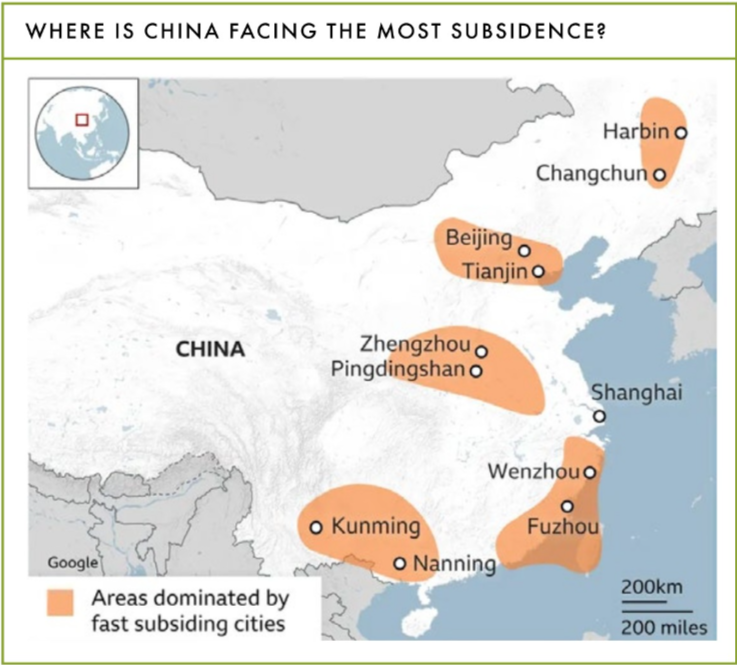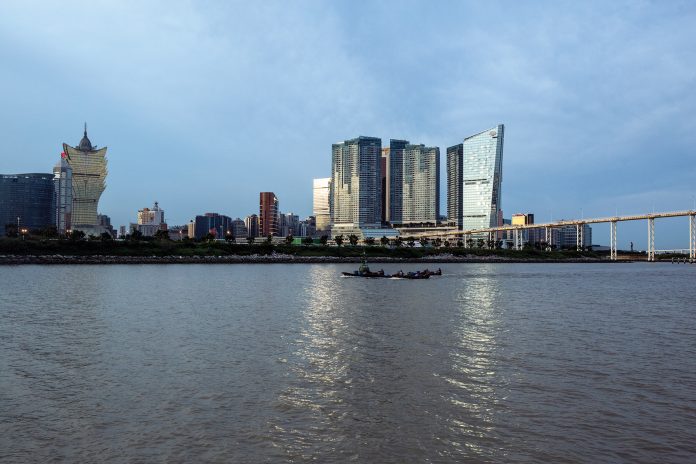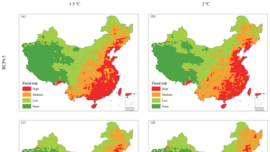China’s massive wave of urbanisation is threatened by land subsidence, a study indicates.
Macau Business | July 2024 | Special Report | How climate change(s) Macau
Forty percent of China’s major cities are suffering “moderate to severe” levels of subsidence, putting millions of people at risk of flooding

A study published in April, analysing 82 major cities in China, showed that about 40 per cent of the land is “undergoing moderate to severe subsidence, which adds to the risk of flooding for a large population.”
The study’s title, “A national-scale assessment of land subsidence in China’s major cities,” which appeared in Science magazine, sums up the research’s goals.
Its 63 authors, all Chinese, are renowned scientists from the mainland, so the credibility of the information is beyond doubt. The research was funded by the National Natural Science Foundation of China and the Chinese Academy of Sciences.
The impact of the study was enormous. In addition to being in the news via Reuters, it originated several texts, with emphasis on one published in competitor Nature: “Nearly half of China’s major cities are sinking — some ‘rapidly’.”
Through radar observations from satellites, scientists were able to track ground deformation, between 2015 and 2022. “Over many years, radar can pick up even relatively small changes on the order of millimetres per year.” This was the first time that satellite data was used to systematically measure how China’s major cities are sinking. An example: some parts of Shanghai have subsided up to 9 feet in the last century.

The northern city of Tianjin “was identified as one of the worst-hit.” According to Reuters dispatch, “last year, 3,000 residents were evacuated after a’sudden geological disaster’ that investigators blamed on water depletion as well as the construction of geothermal wells.”
One of the consequences highlighted by the study is that part of the population living in areas of high urbanisation will be in danger in the coming decades.
A third of China’s urban population lives in the most affected areas. In the conclusions, the authors support the possibility that about a quarter of China’s coastal land will be below sea level in the next hundred years, largely due to subsidence.
“Of the examined urban lands, 45 per cent are subsiding faster than 3 millimetres per year, and 16 per cent are subsiding faster than 10 millimeters per year, affecting 29 and 7 per cent of the urban population, respectively,” wrote the authors.
“The subsidence appears to be associated with a range of factors, such as groundwater withdrawal and the weight of buildings,” reads the paper.
“By 2120, 22 to 26 per cent of China’s coastal lands will have a relative elevation lower than sea level, hosting 9 to 11 per cent of the coastal population, because of the combined effect of city subsidence and sea-level rise. Our results underscore the necessity of enhancing protective measures to mitigate potential damages from subsidence,” the team lead by Zurui Ao (Associate Researcher at South China Normal University) recommends.
“Subsidence is the technical term for when land sinks relative to its surroundings, and it’s a major threat for cities around the world. It accelerates local sea level rise from climate change, because the land is getting lower as the ocean gets higher. Urban subsidence can also affect inland cities by damaging buildings and roads, and causing drainage issues when water is trapped in sinking areas,” according to the explanations in one of the multiple publications made later on the topic.
Of the 44 major coastal cities suffering from the problem, 30 were in Asia, according to a 2022 Singapore study, quoted by Reuters.























